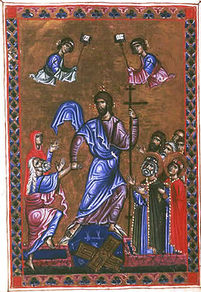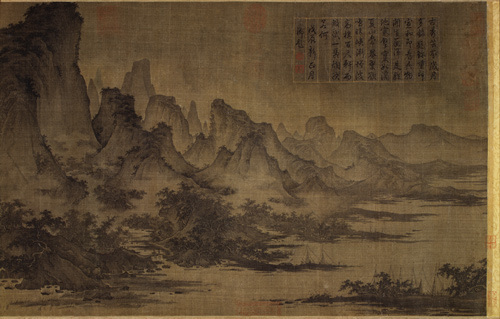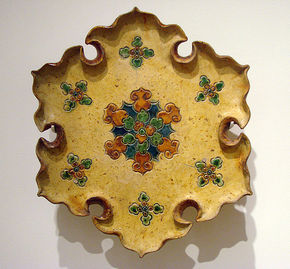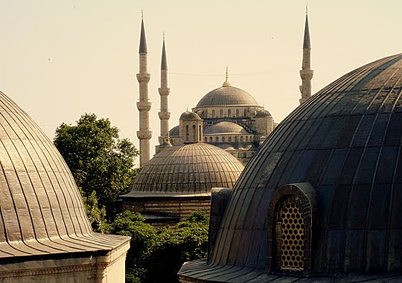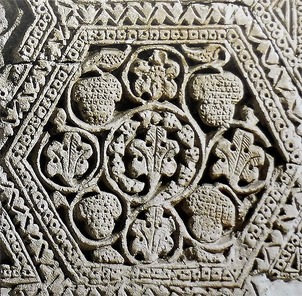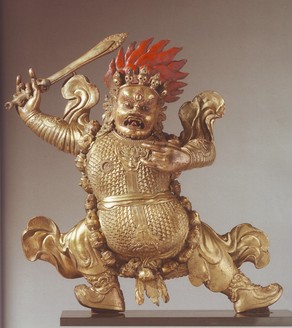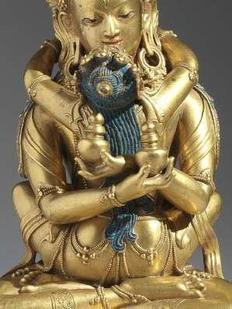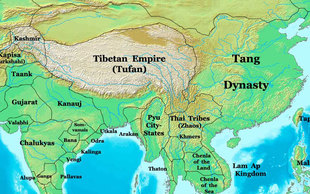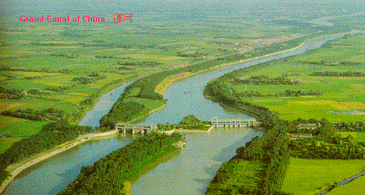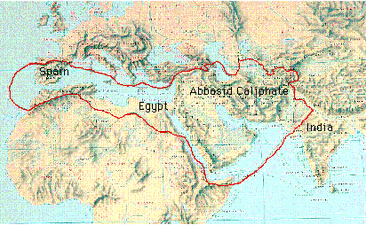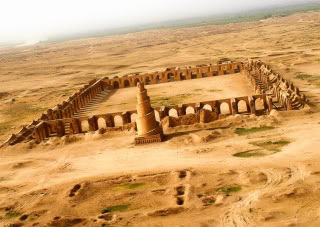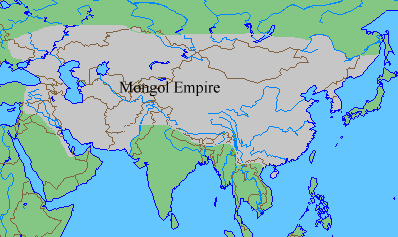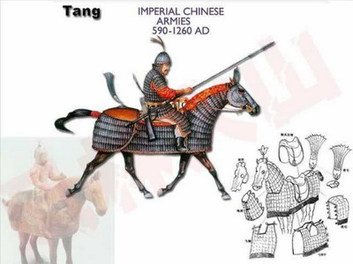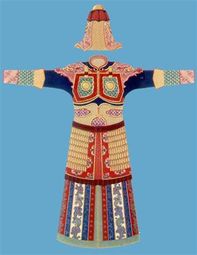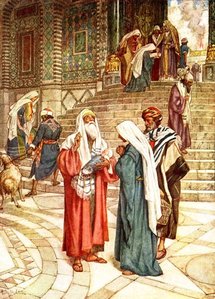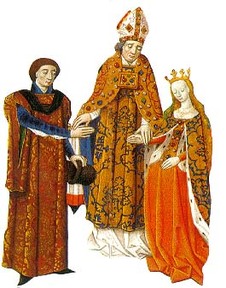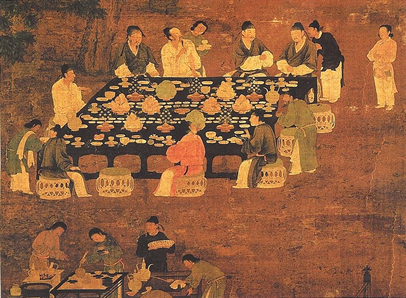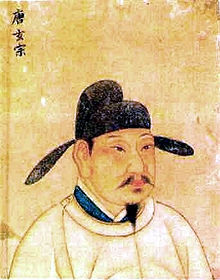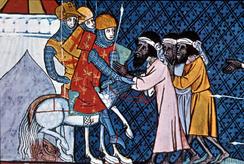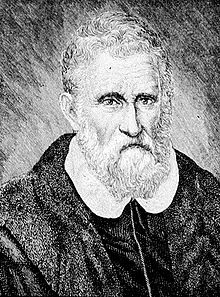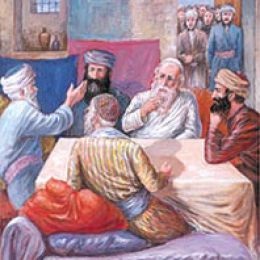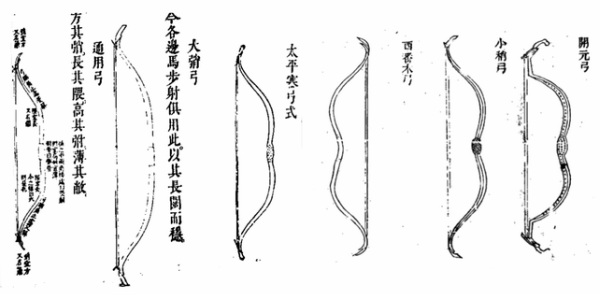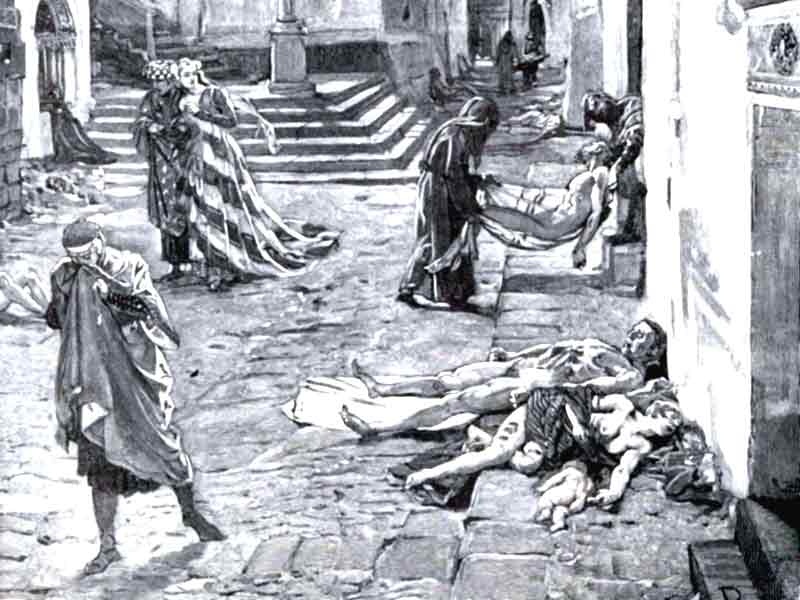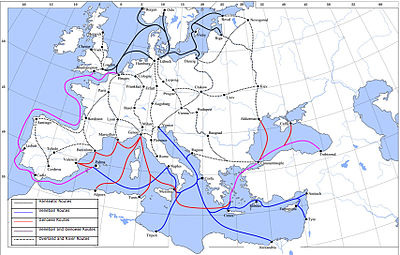AGMSPRITE
Rea Maci (A-S) Hailey Bradley (P-E)
ART & ARCHITECTURE:
- Crusaders
The art of the Crusades was primarily the art produced in Middle Eastern areas under Crusader control. The military crusaders themselves were mostly not noticeably interested in artistic matters, or sophisticated in their taste, and much of their art was destroyed in the loss of their kingdoms. The crusaders encountered a long and rich artistic tradition in the lands they conquered at the end of the 11th century and the beginning of the 12th. Byzantine and Islamic art were the dominant styles in the Crusader states so much that it is assumed that the artists working on Crusader lands were of the same variety of backgrounds. After the bloody taking of Jerusalem chaos followed however the next decades were artistically industrious. After the collapse of Jerusalem to the Muslims, which must have destroyed a great part of the artwork the crusaders produced, the washed up crusaders were mostly confined to a few cities on the Mediterranean coast until Acre was conquered in 1291. Their artistic output did not cease during the 13th century, and shows further influences from the art of the Mongols.
- Crusaders
The art of the Crusades was primarily the art produced in Middle Eastern areas under Crusader control. The military crusaders themselves were mostly not noticeably interested in artistic matters, or sophisticated in their taste, and much of their art was destroyed in the loss of their kingdoms. The crusaders encountered a long and rich artistic tradition in the lands they conquered at the end of the 11th century and the beginning of the 12th. Byzantine and Islamic art were the dominant styles in the Crusader states so much that it is assumed that the artists working on Crusader lands were of the same variety of backgrounds. After the bloody taking of Jerusalem chaos followed however the next decades were artistically industrious. After the collapse of Jerusalem to the Muslims, which must have destroyed a great part of the artwork the crusaders produced, the washed up crusaders were mostly confined to a few cities on the Mediterranean coast until Acre was conquered in 1291. Their artistic output did not cease during the 13th century, and shows further influences from the art of the Mongols.
- Tang Dynasty
The Tang Dynasty in China was considered the golden age of Literature and art. Inspired by contact with India and the Middle East, the empire saw a peak of creativity in many fields. The Tang Dynasty began the present day landscape paintings. In these landscapes, the purpose was not to reproduce exactly the appearance of nature but rather to grip the sentiment or atmosphere of nature. Also, The first major well-documented flowering of Chinese music was for the Qin during the Tang Dynasty though the Qin is known to have been played since before the Han Dynasty as well.
The Tang Dynasty in China was considered the golden age of Literature and art. Inspired by contact with India and the Middle East, the empire saw a peak of creativity in many fields. The Tang Dynasty began the present day landscape paintings. In these landscapes, the purpose was not to reproduce exactly the appearance of nature but rather to grip the sentiment or atmosphere of nature. Also, The first major well-documented flowering of Chinese music was for the Qin during the Tang Dynasty though the Qin is known to have been played since before the Han Dynasty as well.
- Abbasid Empire
Though the common perception of Abbasid artistic production focuses largely on pottery, the greatest development of the Abbasid period was in textiles. Government-run workshops known produced silks bearing the name of the monarch. The use of the domed mosques during this time has set the standard for modern day mosques still in the Middle East.
Though the common perception of Abbasid artistic production focuses largely on pottery, the greatest development of the Abbasid period was in textiles. Government-run workshops known produced silks bearing the name of the monarch. The use of the domed mosques during this time has set the standard for modern day mosques still in the Middle East.
- The Mongols
Finally the art of the Mongols was heavily influenced by religious texts. Bronze sculptures usually showed Buddhist deities. The Mongol rulers were eager customers of the theater The theater at this time was full of spectacles including acrobats, mimes and colorful costumes which appealed to the Mongols and there was a special theater set up within the palace compound in now Beijing by the Mongol court. Painters also saw great encouragement as the status of artisans was raised under Mongol rule.
Finally the art of the Mongols was heavily influenced by religious texts. Bronze sculptures usually showed Buddhist deities. The Mongol rulers were eager customers of the theater The theater at this time was full of spectacles including acrobats, mimes and colorful costumes which appealed to the Mongols and there was a special theater set up within the palace compound in now Beijing by the Mongol court. Painters also saw great encouragement as the status of artisans was raised under Mongol rule.
GEOGRAPHY:
- Crusades
The Crusades did not all occur in one location. In Fact they were spread out through Europe and the Middle East. The first Crusade took places in Constantinople, Edessa and Jerusalem while the second Crusade consisted of Pergamum, Smyrna and Ephesus. In the third Crusade the knights and armies battled in Adrianople, Nish and Ratisbon. And finally the fourth Crusade started in Constantinople and the crusaders traveled until they reached Venice. The journey of the Crusades however was a long and treacherous one; many knights perished because of their failure to adapt in the hot Middle Eastern climate which pretty much baked them. The Muslims had adapted to the climate and wore lighter armor therefore had a far greater advantage
- Crusades
The Crusades did not all occur in one location. In Fact they were spread out through Europe and the Middle East. The first Crusade took places in Constantinople, Edessa and Jerusalem while the second Crusade consisted of Pergamum, Smyrna and Ephesus. In the third Crusade the knights and armies battled in Adrianople, Nish and Ratisbon. And finally the fourth Crusade started in Constantinople and the crusaders traveled until they reached Venice. The journey of the Crusades however was a long and treacherous one; many knights perished because of their failure to adapt in the hot Middle Eastern climate which pretty much baked them. The Muslims had adapted to the climate and wore lighter armor therefore had a far greater advantage
-Tang Dynasty
In the chaos that reigned after the fall of the Han dynasty in, no one knew if a unified China would ever again be possible. Warring clans, political murders, and foreign invaders characterized the next four centuries. The rise of the Tang dynasty in China mirrored the rise of the Han over 800 years earlier. Like the Han dynasty before them, the Tang dynasty was created after the fall of a ruthless leadership. And like the Han before them, the Tang dynasty had their own powerful leader, Emperor Tai-tsung. The borders of the Tang dynasty expanded far into Korea and central Asia. China became even larger during the Tang dynasty than it had been during the Han. The Chinese regularly communicated with lands as far west as Persia, present-day Afghanistan, and the Byzantine Empire. Goods and, more importantly, ideas continued to be exchanged on the Silk Road.
In the chaos that reigned after the fall of the Han dynasty in, no one knew if a unified China would ever again be possible. Warring clans, political murders, and foreign invaders characterized the next four centuries. The rise of the Tang dynasty in China mirrored the rise of the Han over 800 years earlier. Like the Han dynasty before them, the Tang dynasty was created after the fall of a ruthless leadership. And like the Han before them, the Tang dynasty had their own powerful leader, Emperor Tai-tsung. The borders of the Tang dynasty expanded far into Korea and central Asia. China became even larger during the Tang dynasty than it had been during the Han. The Chinese regularly communicated with lands as far west as Persia, present-day Afghanistan, and the Byzantine Empire. Goods and, more importantly, ideas continued to be exchanged on the Silk Road.
- Abbasid Empire
The Abbasids were the third of the Islamic caliphates. It was ruled by the Abbasid dynasty of caliphs who located their capital in Baghdad after overthrowing the Umayyads. Within 150 years of gaining control of Persia the caliphs were forced to give up power because of local emirs. They also lost the Western Provinces of Al-Andalus, Maghreb and Ifriqiya. The Abbasids' rule was ended for three years when the Mongol Khan took Baghdad The Abbasids' rule was briefly ended for three years in 1258, when Hulagu, the Mongol khan, sieged Baghdad and it resumed in Mamluk Egypt in 1261, from where they (Abbasids) continued to claim authority in religious matters until 1519, when power was formally transferred to the Ottoman Empire and the capital relocated to Constantinople.
The Abbasids were the third of the Islamic caliphates. It was ruled by the Abbasid dynasty of caliphs who located their capital in Baghdad after overthrowing the Umayyads. Within 150 years of gaining control of Persia the caliphs were forced to give up power because of local emirs. They also lost the Western Provinces of Al-Andalus, Maghreb and Ifriqiya. The Abbasids' rule was ended for three years when the Mongol Khan took Baghdad The Abbasids' rule was briefly ended for three years in 1258, when Hulagu, the Mongol khan, sieged Baghdad and it resumed in Mamluk Egypt in 1261, from where they (Abbasids) continued to claim authority in religious matters until 1519, when power was formally transferred to the Ottoman Empire and the capital relocated to Constantinople.
- Mongol Empire
The Mongol empire flourished during the 13th and 14th century A.D. It was the largest continuous land empire, it began in Central Asian and eventually stretched from Eastern Europe all the way to the Sea of Japan, covering large parts of Siberia all the way in the north and extending into Southeast Asia, the Indian subcontinent and the Iranian plateau, also the Middle East. At it's greatest extent it covered an area of 12,700 square miles and held a population of 100 million. The vast transcontinental empire connected the east with the west.
The Mongol empire flourished during the 13th and 14th century A.D. It was the largest continuous land empire, it began in Central Asian and eventually stretched from Eastern Europe all the way to the Sea of Japan, covering large parts of Siberia all the way in the north and extending into Southeast Asia, the Indian subcontinent and the Iranian plateau, also the Middle East. At it's greatest extent it covered an area of 12,700 square miles and held a population of 100 million. The vast transcontinental empire connected the east with the west.
MILITARY
- Crusades
The forces used by the Christian or Latin leaders in Syria were formed from an accumulation of sources. The knights composed one portion of the army. It is important, however, to realize that while their influence remained important in the military tactics of the crusader states; their numbers dwindled towards the end of the crusades as the idea of the knight became increasingly associated with nobility and heredity of the title. When the influence of the knights was the weakest, other sources were found to supplement the knight in the army. Besides feudal vassals, recruits for the army were taken from other sources. In emergencies there was a standing obligation for all free men to serve when required. Mercenaries were increasingly hired to supplement the army. The Crusader's main offensive military weapon was the mounted knight. As a large force, the charge of this heavy cavalry was a serious threat in any confrontation. The shock tactics that were used was dependent on the heavily armed knight with lance and sword on horse-back bearing down on an opponent at full speed. Such a charge could inflict heavy damage on an enemy. The Crusader's military tactics have been said to have come from knowledge of Byzantine and Roman military tactics. This tactic of starting in a regimented order was necessary as a battle began to help facilitate the control that a commander would have over the army for as long as possible after the battle had begun. Turkish tactics of using archery against the Crusaders before the actual battle began, in order to unsettle the army, was difficult for European commanders to overcome. Knights enlisted in the crusades with the thoughts of winning glory for god and themselves and to drive the heathen from the Holy Land. Very quickly however, this intention turned into personal greed and brutal conquest among the weaker knights.
- Crusades
The forces used by the Christian or Latin leaders in Syria were formed from an accumulation of sources. The knights composed one portion of the army. It is important, however, to realize that while their influence remained important in the military tactics of the crusader states; their numbers dwindled towards the end of the crusades as the idea of the knight became increasingly associated with nobility and heredity of the title. When the influence of the knights was the weakest, other sources were found to supplement the knight in the army. Besides feudal vassals, recruits for the army were taken from other sources. In emergencies there was a standing obligation for all free men to serve when required. Mercenaries were increasingly hired to supplement the army. The Crusader's main offensive military weapon was the mounted knight. As a large force, the charge of this heavy cavalry was a serious threat in any confrontation. The shock tactics that were used was dependent on the heavily armed knight with lance and sword on horse-back bearing down on an opponent at full speed. Such a charge could inflict heavy damage on an enemy. The Crusader's military tactics have been said to have come from knowledge of Byzantine and Roman military tactics. This tactic of starting in a regimented order was necessary as a battle began to help facilitate the control that a commander would have over the army for as long as possible after the battle had begun. Turkish tactics of using archery against the Crusaders before the actual battle began, in order to unsettle the army, was difficult for European commanders to overcome. Knights enlisted in the crusades with the thoughts of winning glory for god and themselves and to drive the heathen from the Holy Land. Very quickly however, this intention turned into personal greed and brutal conquest among the weaker knights.
- Tang Dynasty
This military power was basically founded during the Zhen Guan Reign of Emperor Taizong who was good at using strategies and was strong enough to personally launch expeditions against other ethnic groups. Under the reigns of Emperor Taizong, Emperor Gaozong and Empress Wu Zetian. Tang’s military domination reached to the northern area of the Mongolian Plateau. Upon founding the Tang Dynasty, the emperor instituted strict military leadership. He centralized authority putting the military power under the control of the emperor. At that time, the national military organizations were Twelve-Guardian Community and Six-General Community of the Prince’s Palace. Additionally, the Yulin Army, the Longwu Guardians and the Shenwu Guardians were selected to protect the emperor and the imperial palace. Meanwhile, the strict regulations imposed on the army helped the Tang military to become more powerful. Later the emperor also appointed the eunuch to supervise the army, which turned out to be a curse helping the rising of the later rebellious forces.
This military power was basically founded during the Zhen Guan Reign of Emperor Taizong who was good at using strategies and was strong enough to personally launch expeditions against other ethnic groups. Under the reigns of Emperor Taizong, Emperor Gaozong and Empress Wu Zetian. Tang’s military domination reached to the northern area of the Mongolian Plateau. Upon founding the Tang Dynasty, the emperor instituted strict military leadership. He centralized authority putting the military power under the control of the emperor. At that time, the national military organizations were Twelve-Guardian Community and Six-General Community of the Prince’s Palace. Additionally, the Yulin Army, the Longwu Guardians and the Shenwu Guardians were selected to protect the emperor and the imperial palace. Meanwhile, the strict regulations imposed on the army helped the Tang military to become more powerful. Later the emperor also appointed the eunuch to supervise the army, which turned out to be a curse helping the rising of the later rebellious forces.
- Abbasid Empire
With the Buwayhid dynasty on the decline a space was created that was eventually filled by the dynasty of Turks known as the Saljuqs. When the amir and former slave Basasiri took up the Shia banner in Baghdad in 1058, the caliph al-Qa'im was unable to defeat him without outside help. The Saljuq sultan, restored Baghdad to Sunni rule and took Iraq for his dynasty. Once again, the Abbasids were forced to deal with a military power that they could not match, though the Abbasid caliph remained the titular head of the Islamic community. While the Caliph Mustarshid was the first caliph to build an army capable of meeting a Saljuq army in battle, he was nonetheless defeated in 1135 and assassinated. The Caliph Muqtafi was the first Abbasid Caliph to regain the full military independence of the Caliphate, with the help. After nearly 250 years of subjection to foreign dynasties, he successfully defended Baghdad against the Saljuqs in the Siege of Bagdhad thus securing Iraq for the Abbasids. The reign of al-Nasir brought the caliphate to power throughout Iraq, based in large part on the Sufi organizations that the caliph headed.
With the Buwayhid dynasty on the decline a space was created that was eventually filled by the dynasty of Turks known as the Saljuqs. When the amir and former slave Basasiri took up the Shia banner in Baghdad in 1058, the caliph al-Qa'im was unable to defeat him without outside help. The Saljuq sultan, restored Baghdad to Sunni rule and took Iraq for his dynasty. Once again, the Abbasids were forced to deal with a military power that they could not match, though the Abbasid caliph remained the titular head of the Islamic community. While the Caliph Mustarshid was the first caliph to build an army capable of meeting a Saljuq army in battle, he was nonetheless defeated in 1135 and assassinated. The Caliph Muqtafi was the first Abbasid Caliph to regain the full military independence of the Caliphate, with the help. After nearly 250 years of subjection to foreign dynasties, he successfully defended Baghdad against the Saljuqs in the Siege of Bagdhad thus securing Iraq for the Abbasids. The reign of al-Nasir brought the caliphate to power throughout Iraq, based in large part on the Sufi organizations that the caliph headed.
- Mongol Empire
The Mongol military tactics and organization enabled Genghis Khan and the Mongol Empire to conquer nearly all of continental Asia, the Middle East and parts of eastern Europe. The original foundation of that system was an extension of the nomadic lifestyle of the Mongols. Other elements were invented by Genghis Khan, his generals, and his successors. Technologies useful to attack fortifications were adapted from other cultures. The number of troops was at least 105,000 in 1206. The Mongol military organization was simple but effective, based on the decimal system. The army was built up from squads of ten men each, called an arbat; ten arbats constituted a company of one hundred, called a zuut; ten zuuts made a regiment of one thousand called myanghan and ten myanghans would then constitute a division of ten thousand (tumen). The Mongols were most famous for their horse archers, but troops armed with lances were equally skilled, and the Mongols recruited other military talents from the cities they conquered. With experienced Chinese engineers and bombardier corps who were experts in building catapults and other machines, the Mongols could lay siege to fortified positions, sometimes building machinery on the spot using available local resources. Forces under the command of the Mongol Empire were trained, organized, and equipped for mobility and speed. Mongol soldiers were more lightly armored than many of the armies they faced, but able to make up for it with maneuverability. Each Mongol warrior would usually travel with multiple horses, allowing him to quickly switch to a fresh mount as needed. In addition, soldiers of the Mongol army functioned independently of supply lines, considerably speeding up army movement.
(Watch between 1:20-3:05)
The Mongol military tactics and organization enabled Genghis Khan and the Mongol Empire to conquer nearly all of continental Asia, the Middle East and parts of eastern Europe. The original foundation of that system was an extension of the nomadic lifestyle of the Mongols. Other elements were invented by Genghis Khan, his generals, and his successors. Technologies useful to attack fortifications were adapted from other cultures. The number of troops was at least 105,000 in 1206. The Mongol military organization was simple but effective, based on the decimal system. The army was built up from squads of ten men each, called an arbat; ten arbats constituted a company of one hundred, called a zuut; ten zuuts made a regiment of one thousand called myanghan and ten myanghans would then constitute a division of ten thousand (tumen). The Mongols were most famous for their horse archers, but troops armed with lances were equally skilled, and the Mongols recruited other military talents from the cities they conquered. With experienced Chinese engineers and bombardier corps who were experts in building catapults and other machines, the Mongols could lay siege to fortified positions, sometimes building machinery on the spot using available local resources. Forces under the command of the Mongol Empire were trained, organized, and equipped for mobility and speed. Mongol soldiers were more lightly armored than many of the armies they faced, but able to make up for it with maneuverability. Each Mongol warrior would usually travel with multiple horses, allowing him to quickly switch to a fresh mount as needed. In addition, soldiers of the Mongol army functioned independently of supply lines, considerably speeding up army movement.
(Watch between 1:20-3:05)
SOCIAL:
- Crusades
Most writings stress the crusades as a masculine movement symbolic of male courage. But women were also involved behind the curtains and as direct victims to the crusaders. Women at home were closely connected with the crusade movement by aiding the enrollment of crusading men, taking on extra duties in their absence, and supporting them financially and with prayer. The best known example is Adela of Blois who messaged with her husband while he was on a Crusade and she was at home managing his fief. Men could journey to The Holy Land without having to worry about their home because wives or mothers were in charge of their estates. Even though most women showed their support for the crusades at home, some women took the cross themselves to go on the crusade. Aristocratic women who joined the movement often found that they had new positions of authority they did not have in the West. A woman who had ultimate political power in the East was Melisande of Jerusalem, who under law gained hereditary rights to the crown upon her husband's death. Like Eleanor, Melisande never led troops into battle, but she did participate in acts of political diplomacy.
- Crusades
Most writings stress the crusades as a masculine movement symbolic of male courage. But women were also involved behind the curtains and as direct victims to the crusaders. Women at home were closely connected with the crusade movement by aiding the enrollment of crusading men, taking on extra duties in their absence, and supporting them financially and with prayer. The best known example is Adela of Blois who messaged with her husband while he was on a Crusade and she was at home managing his fief. Men could journey to The Holy Land without having to worry about their home because wives or mothers were in charge of their estates. Even though most women showed their support for the crusades at home, some women took the cross themselves to go on the crusade. Aristocratic women who joined the movement often found that they had new positions of authority they did not have in the West. A woman who had ultimate political power in the East was Melisande of Jerusalem, who under law gained hereditary rights to the crown upon her husband's death. Like Eleanor, Melisande never led troops into battle, but she did participate in acts of political diplomacy.
- Tang Dynasty
During the Tang Dynasty there were basically eight social classes. The emperor and his family were usually the most powerful in the Tang Dynasty’s social hierarchy. If, however the emperor had worked his way up to power rather than coming from an eminent family it was possible for the aristocracy to become more powerful in certain instances. The aristocracy was the next in the social hierarchy, followed by the bureaucracy. The bureaucracy was divided into two separate levels of honor the scholars and the functionaries. The eunuchs came next in the social hierarchy as they functioned as servants in the emperor’s palace. The clergy were above the peasants who in turn were higher in the hierarchy than the artisans and traders. Slaves were the lowest in the Tang Dynasty’s social structure.Laws were enacted to ensure that each of these social classes behaved in a manner befitting their station. These laws encompassed what each group was allowed to wear and own. The Tang Dynasty’s attitude towards women was more liberal than was previously found. Women were accorded with more respect and power. Women were even allowed to take religious orders and become priestesses.
During the Tang Dynasty there were basically eight social classes. The emperor and his family were usually the most powerful in the Tang Dynasty’s social hierarchy. If, however the emperor had worked his way up to power rather than coming from an eminent family it was possible for the aristocracy to become more powerful in certain instances. The aristocracy was the next in the social hierarchy, followed by the bureaucracy. The bureaucracy was divided into two separate levels of honor the scholars and the functionaries. The eunuchs came next in the social hierarchy as they functioned as servants in the emperor’s palace. The clergy were above the peasants who in turn were higher in the hierarchy than the artisans and traders. Slaves were the lowest in the Tang Dynasty’s social structure.Laws were enacted to ensure that each of these social classes behaved in a manner befitting their station. These laws encompassed what each group was allowed to wear and own. The Tang Dynasty’s attitude towards women was more liberal than was previously found. Women were accorded with more respect and power. Women were even allowed to take religious orders and become priestesses.
- Mongol Empire
Under Mongol rule, merchants had a higher status than they had in traditional China. During their travels they could rest and secure supplies through a postal-station system that the Mongols had established. The Mongols did not have their own artisan class in traditional times because they migrated from place to place and could not carry with them the supplies needed by artisans. They were thus dependent upon the sedentary world for crafts, and they prized artisans highly. For example, during Genghis Khan’s attack on Samarkand, he instructed his soldiers not to harm any artisans or craftsmen. Craftsmen throughout the Mongol domains were offered tax benefits and were freed from (unpaid labor), and their products were highly prized by the Mongol elite. The Mongol’s extraordinary construction projects required the services of artisans, architects, and technocrats. The Mongols provided artisans with a higher status than was the case in many societies. Traditional Chinese officials, for example, had prized the goods made by craftsmen but accorded the craftsmen themselves a relatively low social status. The Mongols altered this perception of craftsmen and offered them special concessions and privileges.
Under Mongol rule, merchants had a higher status than they had in traditional China. During their travels they could rest and secure supplies through a postal-station system that the Mongols had established. The Mongols did not have their own artisan class in traditional times because they migrated from place to place and could not carry with them the supplies needed by artisans. They were thus dependent upon the sedentary world for crafts, and they prized artisans highly. For example, during Genghis Khan’s attack on Samarkand, he instructed his soldiers not to harm any artisans or craftsmen. Craftsmen throughout the Mongol domains were offered tax benefits and were freed from (unpaid labor), and their products were highly prized by the Mongol elite. The Mongol’s extraordinary construction projects required the services of artisans, architects, and technocrats. The Mongols provided artisans with a higher status than was the case in many societies. Traditional Chinese officials, for example, had prized the goods made by craftsmen but accorded the craftsmen themselves a relatively low social status. The Mongols altered this perception of craftsmen and offered them special concessions and privileges.
|
POLITICAL
-The Tang Dynasty built a state structure that stood for a thousand years. The Chinese were allowed to hold positions in local and regional governments which was also the basis of the Mongol political structure. The reason the Chinese adopted the structure of the Mongols was because most civilizations that were connected along trade networks ended up adapting each others way of life. In the Abbasid dynasty there was a massive fifteen year revolt that began to diminish their empire before it was finally crushed. The constant fighting of theocracy in combination with the Crusades created the tension of the East and West that still exists today. In China there was an entire dynastic change which improved life for the people living there. Merchants were accorded higher status in the Mongol administration than they had under Chinese rule. Also, Intermarriage between Mongols and the Chinese was outlawed because the Mongols looked down upon the Chinese. |
RELIGION:
- The Crusades were a set of Holy Wars which helped shape the Christian religion as we know it today. The most famous Crusades were aimed at taking Jerusalem and other holy places associated with Jesus from Islamic control and returning them to Christianity. The Crusaders were made up of Kings, Popes, Bishops, and Nobles. These wars helped the Christians gain power over most of Europe. Also, at the same time China continued to develop their modern beliefs that they still believe today. When the Mongols conquered China the Chinese were able to practice their own religion. The Chinese believed that the afterlife was a reality parallel to the living world, complete with its own bureaucracy and afterlife currency needed by dead ancestors. Along the Silk road there were many Jewish communities and the Mediterranean in addition to settlements of Chinese merchants in Southeast Asia.
INTELLECT:
|
